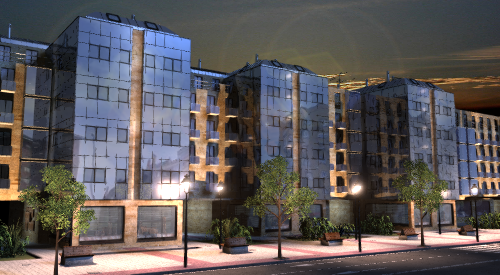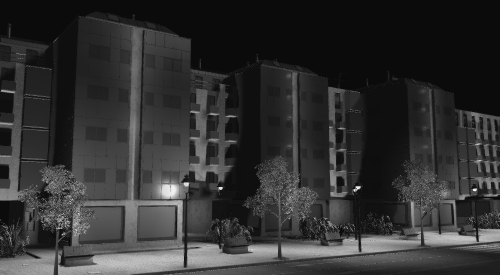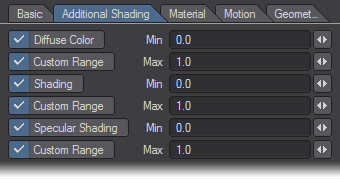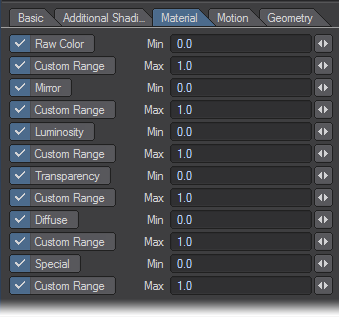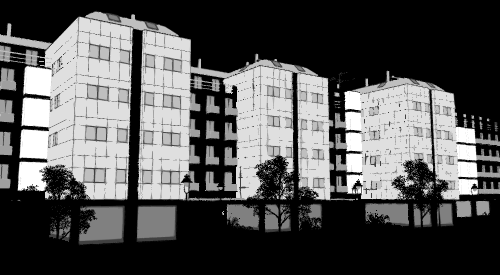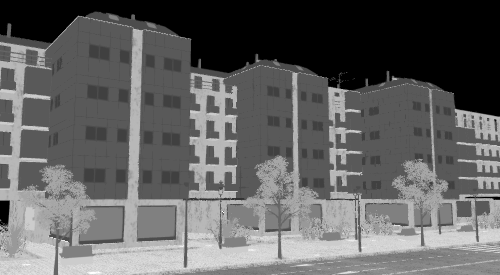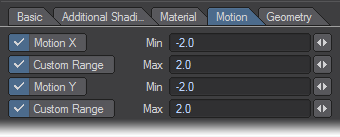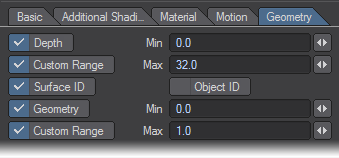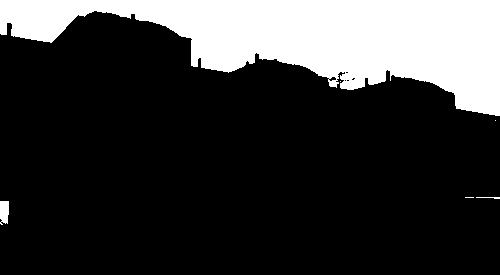Photoshop PSD Export
The Photoshop PSD Export image filter is an image saver masquerading as an image filter. Being a filter allows it to have access to all the different internal render buffers. When you render a frame, a sequentially numbered PSD file is saved with each of the selected buffers placed into their own layers.
This filter is still included, but preferred workflow now is to save the buffers needed as individual files. Buffers to be output can be chosen from the list of buffers shown here.
Basic Tab
- Final Render - Represents the final output from the LightWave render.
Final Render is several filters in one, all of which will be activated when you look at the PSD file. The following additional filters will be available in the PSD file: Effect (-), Effect (+), Surface, Diffuse Lighting, and Refraction.
- Pre-effect Render - Represents the render before effects, such as lens flare, are applied.
- Specular Color - Represents the specular color options of a surface.
- Reflection - Represents the reflection channel for a surface.
- Diffuse Shading - A single channel buffer, indicates the amount of light reflected toward the camera from a surface, including the effects of shadows cast onto the surfaces.
- Shading - A single channel buffer, represents the lighting effects for shadows, as well as specular and diffuse.
- Specular - A single channel buffer, indicates the value of the specular attribute of a surface.
- Background - Represents the channel buffer when options in the Backdrop panel are activated, such as Gradient Backdrop or Image World.
Examples of various filters (Render from the Night.lws scene, included with the LightWave content.):
Final Render, Pre-effect Render
Specular Color, Reflection
Diffuse Shading, Shading
Additional Shading Tab
- Diffuse Color - A three channel buffer, providing color options, and accounts for the part of the render for diffuse lighting, surfacing, and shadowing.
- Shadow - A single channel buffer, indicates the location and intensity of shadows, but not shadow color. The brighter areas indicate more intense shadows.
- Specular Color - A single channel buffer, indicates the intensity of specular highlights on a surface due to all lights, though this does not include color information.
Diffuse Color
Shadow, Specular Shading
Material Tab
- Raw Color - A three channel buffer, represents the value of the Color attribute of a surface
- Mirror - A single channel buffer, directly indicates the value of the Reflection value of a surface.
- Luminosity - A single channel buffer, indicates the intensity of luminosity on a surface.
- Transparency - A single channel buffer, indicates the value of the transparency attribute of a surface
- Diffuse - A single channel buffer, indicates the value of the diffuse attribute of a surface.
- Special - A single channel buffer, indicates the special buffer values specified for a surface in the Surface Editor. Special uses only the first special buffer value.
Raw Color, Mirror
Transparency, Diffuse
Motion Tab
- Motion X - A single channel buffer, indicates the direction of the geometry along the horizontal axis in relation to the camera. Negative values indicate movement towards the left, while positive values indicate movement towards the right. If the geometry is represented with a gradient, meaning parts are moving in different directions; a mid-range gray value will be used for the background.
- Motion Y -A single channel buffer, indicates the direction of the geometry along the vertical axis in relation to the camera. A positive value indicates a downward movement, while a negative value indicates an upward movement. If the geometry is represented with a gradient, meaning parts are moving in different directions; a mid-range gray value will be used for the background.
Geometry Tab
- Depth - A single channel buffer, indicates the relative distance of items from the camera. The further away an item is the brighter it is represented.
- Surface ID - A single channel buffer, indicates the internal surface identifier in Layout for each surface element in the final render, giving the ability to single out specific surfaces in the rendered image.
- Object ID - A single channel buffer, indicates the object identifier for each surface element in the final render. The more items in a scene, the larger the values.
- Geometry - A single channel buffer, indicates the relation of the angle of the polygon’s surface normal and the direction of the camera. The brighter the surface, the more it faces the camera directly.
Depth, Geometry
The Max field determines the maximum value allowed in a buffer. So the acceptable buffer values are always zero to the Max. All values in the buffer are divided by Max to normalize them to the range zero to one.
The Sliding min/max range option will dynamically compute the minimum and maximum values of each buffer. The values are computed for every frame so the output buffers will have the widest possible range of values. This is great for still images, but animations should not use this setting, due to the lack of “temporal coherence” (i.e., the images may “pop” from frame to frame).
The 16-bit component output option will save out 16 bits per channel/buffer. Normally, only eight bits are used.

